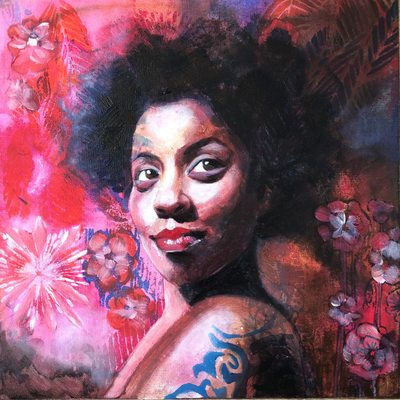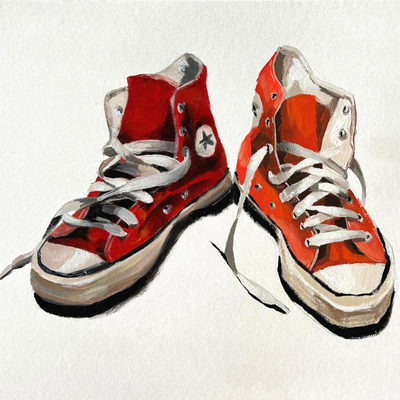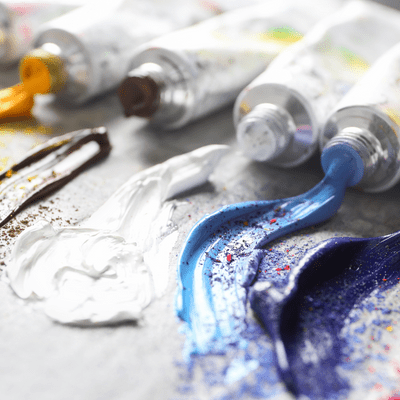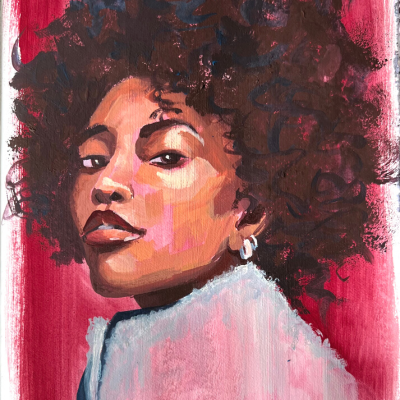Transitioning from Watercolor to Gouache: The Ultimate Guide
Are you a watercolor artist willing to transition to gouache? I’ve been there and will share tips, techniques, personal stories and insights to ensure your transition is as enjoyable as possible. After all, isn’t the pleasure of creating something beautiful what makes art so incredibly fulfilling?
Table of Contents
Understanding the Differences
I remember the first time I dipped my brush into a pot of gouache after years of watercolor painting—it was like going from sailing in a serene lake to navigating through a vibrant river; Both are amazing, but they require slightly different skills and mindset.
Watercolor and gouache opacity
Watercolor and gouache, at first glance, may look like cousins—and they are! However, as those of us with siblings or cousins know, family resemblance doesn’t mean uniformity.
Gouache is typically more opaque than watercolor, thanks to the larger pigment particles and the added white fillers, which also give gouache that unique velvety matte finish we love.
Opacity in this context, means you have the power to cover the layers beneath completely. Now, this might seem trivial, but it puts you in the driver’s seat when deciding what elements of your painting to highlight.
It changes how you approach your painting, and the planning of your composition becomes fundamentally different. You can use white with gouache and cover what’s below instead of leaving the paper’s white untouched with watercolor.
You don’t need to plan where to leave the white of the paper, you can just go and apply color as you like, from dark to light or the other way around.

Watercolor and gouache drying time
Let’s talk drying time. It depends on how much water you add to the watercolor, but it can take time. You need to use a hair dryer sometimes to speed up the process.
Gouache is drying really fast, under a minute to fully dry, so you don’t lose your momentum while painting. Do you think it’s a problem? Well, no!
I’ll never forget the first time I painted with gouache. I made a minor slip-up and thought I was done for, but—ta-dah!—I could rectify it since you can layer gouache. It truly felt like I had been granted an artist’s wish.
Rewetting gouache and watercolor
Then there’s the subject of re-wetting and blending. One prominent feature of watercolor is its ability to reactivate with water, making blending colors as easy as pie. While it can somewhat reactivate, Gouache isn’t as whimsical and fluid, leading to a more decisive and deliberate painting style.
My personal ‘aha’ moment, the one where the differences between gouache and watercolor became crystal clear, was during a late-night painting session.
I was working on a landscape piece, struggling to get the shades of a sunset right. Suddenly, I reached for my gouache instead of watercolors, and the switch in opacity and blending properties was as if I had unlocked a new level in a video game.
The vibrancy of the hues, depth, and distinct layers. It was such a game-changer moment! Since then, while I still adore watercolors, gouache holds a special place in my kit.

Artist Tools: Watercolor vs. Gouache
We artists need specific tools to bring our creative visions to life. So, what are the key differences between watercolor and gouache supplies, and how can you pick the best gouache gear if you’re coming from a watercolor background? Let me help you with that.
Brushes
With watercolor, we often use soft brushes made of natural hair. They can hold plenty of water and paint, making applying those delicate, dreamy washes easier.
When it comes to gouache, the secret is in striking a balance. You need soft and slightly firmer brushes, allowing for precise control of thicker paint without scratching the paper.
My advice? Experiment with synthetic brushes-taklon and nylon personal favorites- that hold their shape well and can handle the demands of gouache. Don’t worry. You don’t have to throw away your watercolor brushes!
In fact, having variety in your collection can be quite beneficial. I’m using the same brushes for gouache and watercolor.
Paint
Now, let’s chat about the star of the show—the paint itself. Watercolor and gouache paints differ mainly in terms of opacity, consistency, and finish. Watercolor is transparent, perfect for creating those dreamy, almost ethereal effects.
Conversely, Gouache boasts a rich, velvety, opaque consistency that lends itself to bolder, more graphic artwork.
For budding gouache artists, I recommend trying a few different brands to find the one that resonates with your style. My top picks are here. You don’t need a massive collection of colors at first when making the switch.
Start with a basic set (magenta, cyan, yellow, white, and black) and expand as you fall in love with this delightful medium. I even made custom kits for you!
Paper
Paper choice is crucial, my friends! Watercolor paper is usually heavier and more absorbent, designed to handle wet washes and prevent warping. While you can use watercolor paper for gouache, you might want to explore other options.
Hot-pressed watercolor paper or mixed media paper with a smooth surface is excellent for gouache because it allows for an even, crisp application of paint without soaking up too much moisture.
I adore Strathmore’s Bristol Smooth Surface or Canson’s Mixed Media paper for gouache projects. When you’re starting, test different papers and see which texture and weight bring your creations to life the best way.
Switching from watercolor to gouache, it’s almost like adjusting the sails to a different wind. It’s exhilarating! Embrace the changes, play with tools and supplies, and let your artistic curiosity lead you.
You’ll soon discover that as you expand your toolbox, you’re also broadening your creative horizons and welcoming a world of diverse artistic possibilities!
Wrapping Up
Transitioning from watercolor to gouache isn’t a contest or a quest for a better medium—it’s about broadening your expressive palette and welcoming new creative adventures.
Gouache’s vibrancy and opacity might feel like a strange new language at first, but the beauty of this medium is in its nuances—its exploration and learning curve.
Remember those moments when you first started painting with watercolors? All those splendid discoveries, overcoming challenges, the giddy excitement of seeing your improvement each day? You’re about to embark on that delightful journey all over again with gouache. So, brace yourself for another round of fun-filled learning and creating!
Don’t rush the process—savor it. Embrace exploration and curiosity along your artistic transition. Experiment with different brushes, paints, and papers. And, as always, make sure to leave some room for mistakes and happy accidents—they often lead to the most unexpected breakthroughs!










